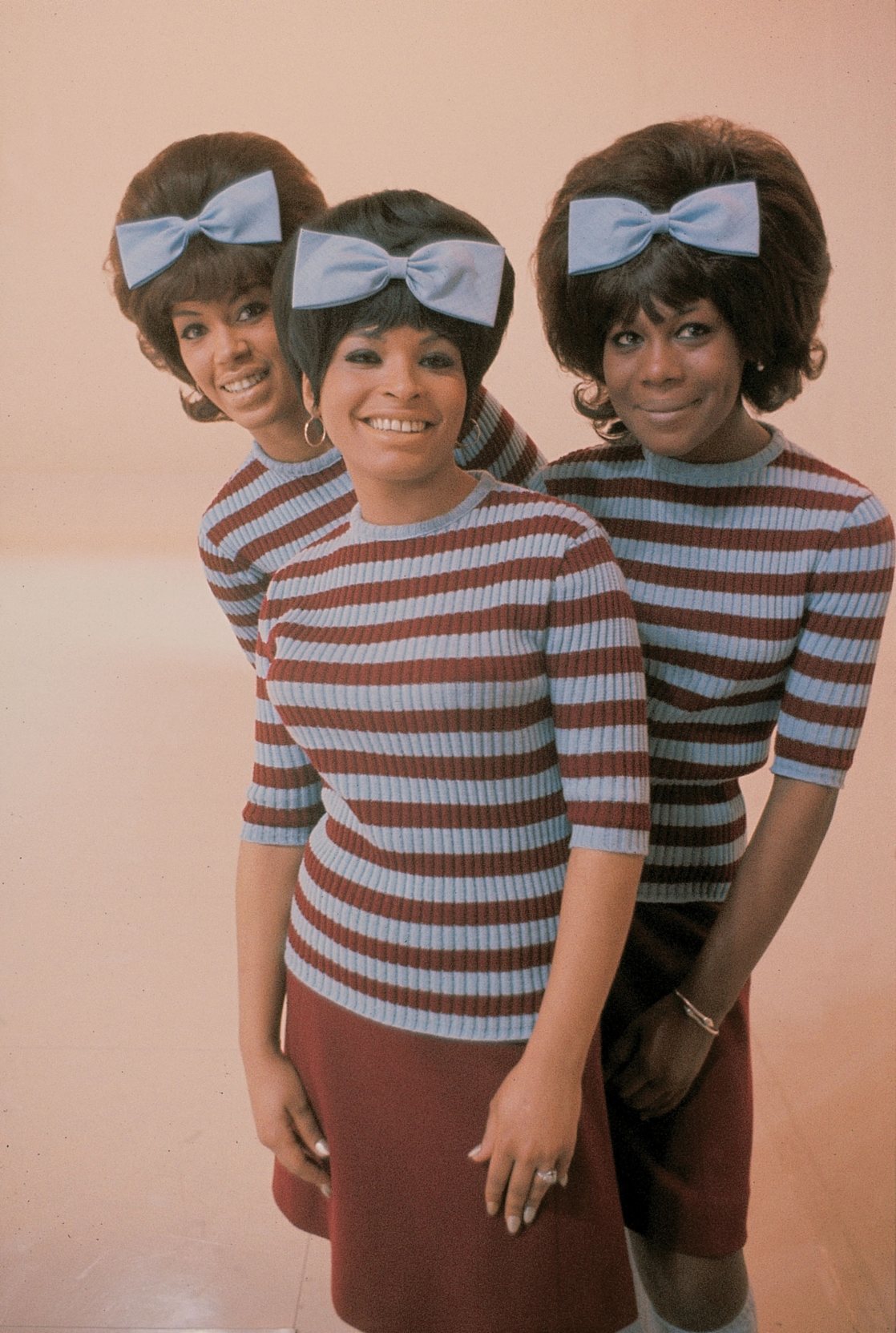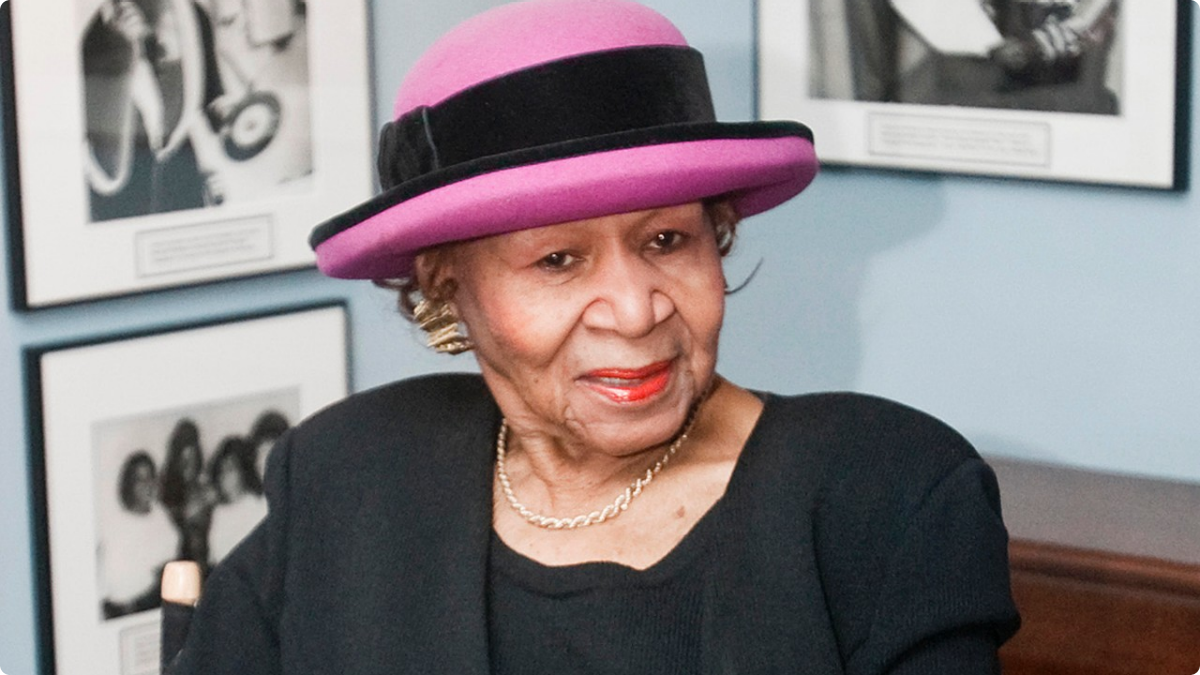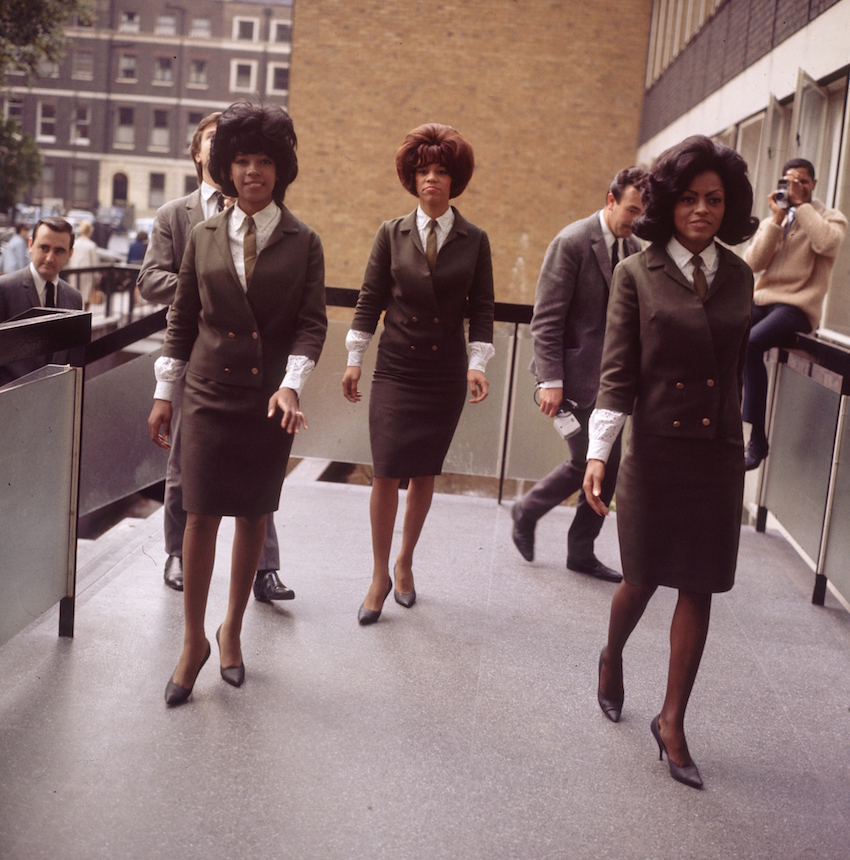
Wearing identical suits even though not performing, The Supremes, one of the most popular of American female vocal groups. (Photo by Hulton Archive/Getty Images)
Maxine Powell didn’t write songs or play any instruments. She was arguably as important as anyone employed at Motown Records in the 1960s. Diana Ross called her “the person who taught me everything I know”. For five years from 1964, Powell taught grooming, poise and social graces to all the stars of Motown, including The Jacksons, The Supremes, Marvin Gaye, The Marvelettes, Mary Wells and Smokey Robinson and the Miracles. “She was such an important, integral part of what we were doing here at Motown,” Robinson said, “It didn’t matter who you became during the course of your career — how many hits you had, how well your name was known around the world — two days a week when you were back in Detroit you had to go to artists’ development. It was mandatory.”
Martha Reeves, the former lead singer of Martha and the Vandellas, in an interview with the New York Times, agreed with Smokey:
Mrs. Powell was always a lady of grace, elegance and style, and we did our best to emulate her. I don’t think I would have been successful at all without her training.
Powell explained her role:
When I opened up, in 1964, the finishing school, the purpose was to help the artists become class, to know what to do on stage and off stage, because they did come from humble beginnings. Some of them from the projects and some of them were using street language. Some were rude and crude, you understand, but with me, it’s not where you come from, it’s where you’re going.
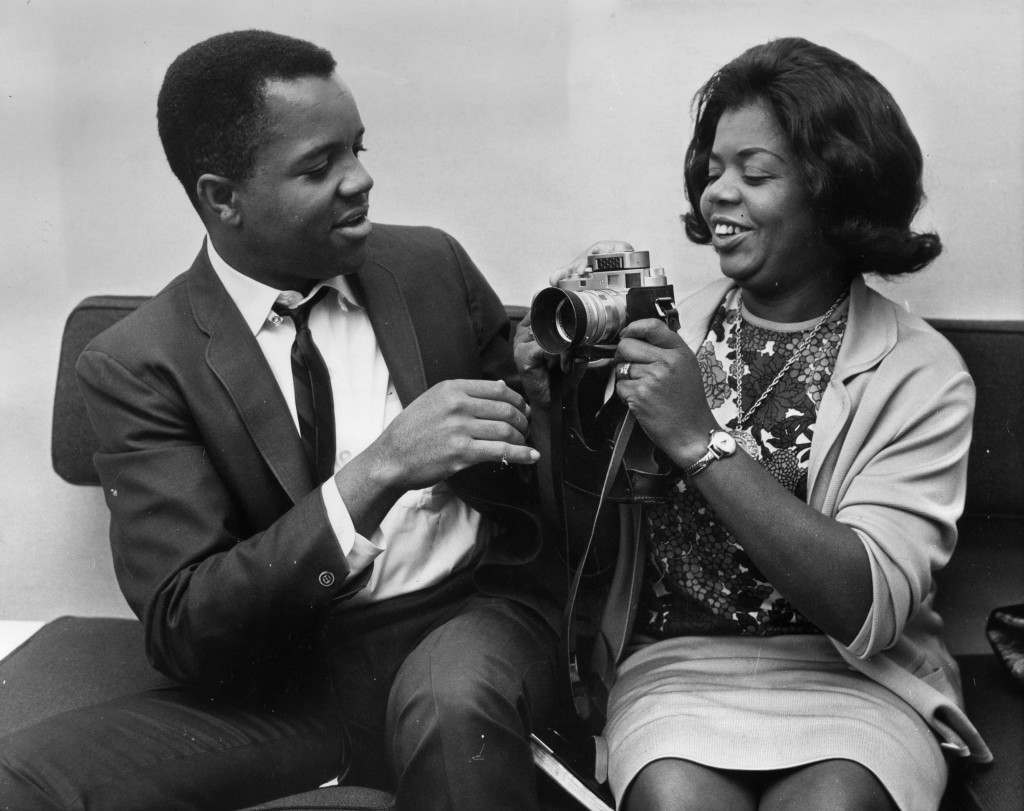
9th October 1964: Berry Gordy Jnr, American songwriter (‘Reet Petite’), impresario and founder of the Tamla Mowtown record label, shows his camera to Mrs Edwards. (Photo by Victor Drees/Evening Standard/Getty Images)
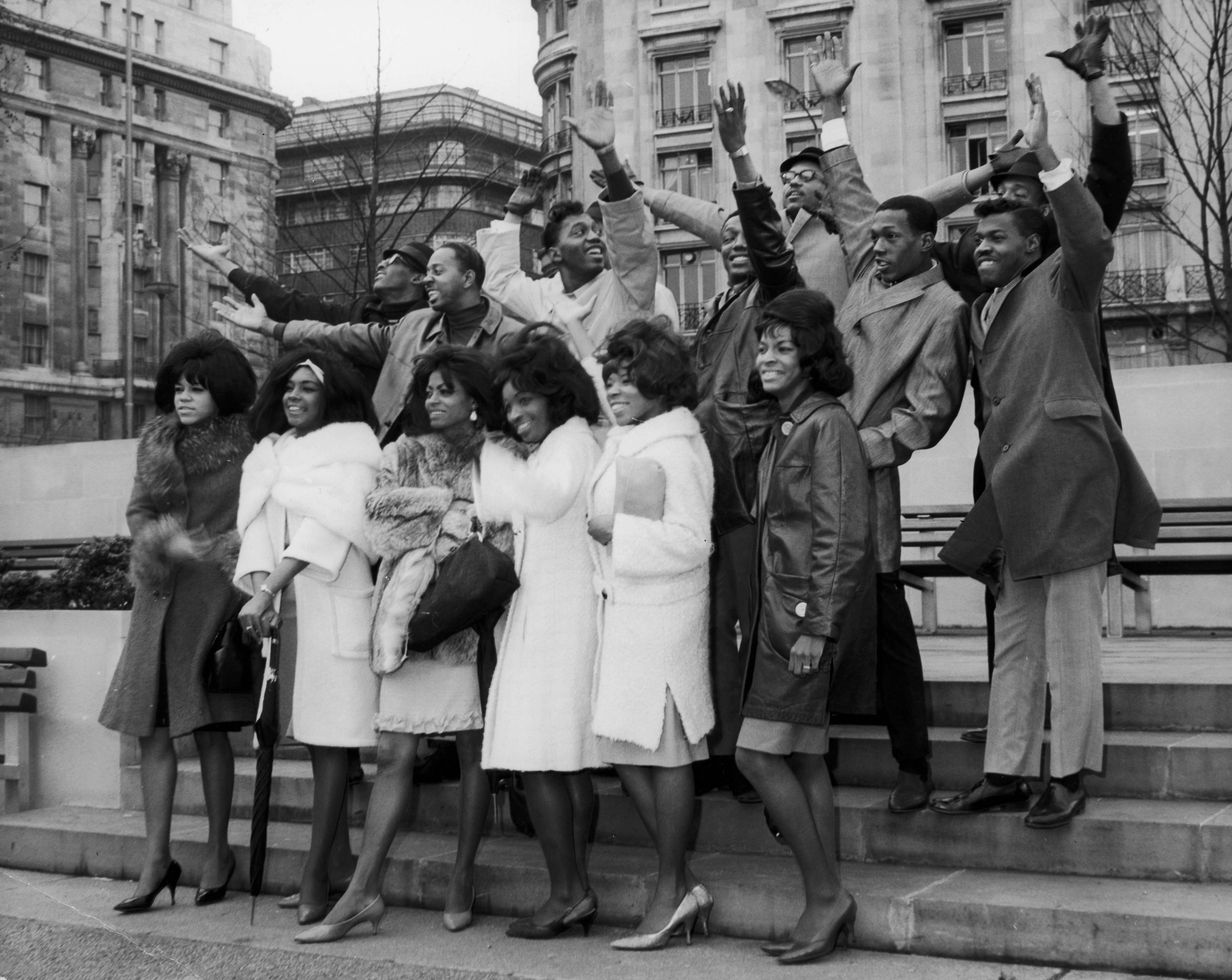
15th March 1965: American pop groups The Supremes, Martha and the Vandellas, Smokey Robinson and the Miracles and the Earl Van Dyke Sextet visiting London. (Photo by Michael Webb/Keystone/Getty Images)
How did Powell get the job with Berry Gordy Junior, Motown’s founder?
I had a finishing and a modeling school and it was quite popular. And, ah, I had about three female models and a couple of male models and a little boy and a little girl. And we worked for Chrysler, this was in the fifties, Chrysler, Packard and Dodge… which was unusual at that time because things were quite different than they are today. I was also a producer and I had an annual show once a year. And, ah, I did a souvenir booklet and I wanted to find someone that did offset work and because I had worked with three artists; one for the cover and two other artists, they did the inside, the ads.
And someone said to me that the Gordy Company, the Gordy Printing Company was the best and they did excellent work. So there’s in Detroit here, there’s a street called Farnesworth and St. Adeline. So I went over and I met the delightful Mrs. Esther Edwards and, ah, she and her brother Fuller Gordy were in the printing business together. And they were elated over this job, they had never seen anything like it before. And that’s how I got to know the Gordys…

Esther Gordy Edwards founded the Gordy Printing Company with two of her brothers in the mid-1940s. With her husband, they created the Ber-Berry Co-Op, which was intended to provide loans to family members. Her younger brother Berry received an $ 800 loan to help start Motown Records in 1959. After Motown became established, Edwards took an active role in management and booking tours, including the legendary Motortown Revue in the early 1960s. She later created the Motown Museum, Hitsville USA. (Via)
…the mother, Mrs. Bertha Gordy, Senior was interested in personal development that I teach. So she took my course. There was no Motown at this particular time. And her daughter that passed away took my course and Esther. And then they have a younger daughter Gwen Gordy, she’s a charmer, and she became one of my models…
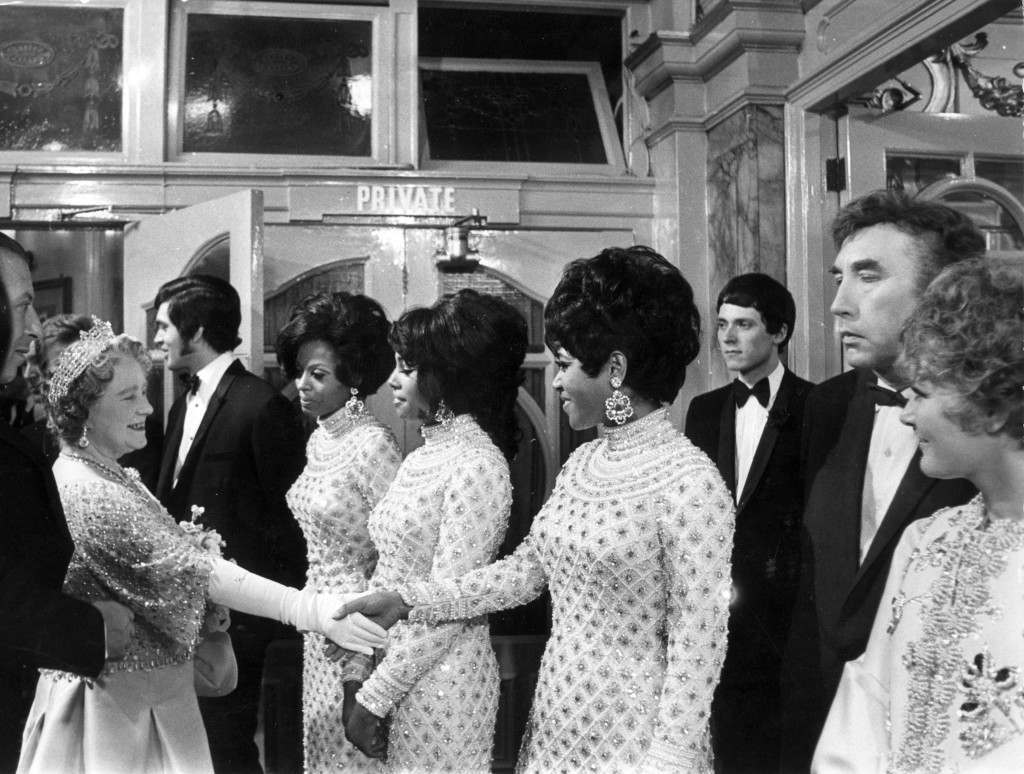
18th November 1968: Elizabeth, the Queen Mother (1900 – 2002) goes backstage to meet the Supremes, Engelbert Humperdinck, Frankie Howerd and Petula Clark after a Royal Variety Performance at the London Palladium. The show is in aid of the Variety Artistes’ Benevolent Fund. (Photo by Douglas Miller/Keystone/Getty Images)
… I did join the company in 1964, they asked me to open up a finishing school there – so I did. I opened in 1964 a finishing school, Motown Finishing School, and I worked with the artists on, first thing we worked with was – who are you? And, what makes you tick? I don’t teach singing. So I also told the artists that, ah, they would, this department would groom and polish them so that they could appear in number one places around the country and even before the king and queen.
Of course the youngsters, you know they came from humble beginning and some were rude and crude from the street and the projects. But with me, it isn’t where you come from is where you’re going. So I told them where they would be appearing. And they laughed and said that I was out of my mind because all they wanted was a hit record. And this is what we did, we worked with developing class…. it’s a funny thing no matter who you are when you purchase a flower or a plant, the first thing you ask is how do I keep this plant and keep it growing beautiful. People need the same concern and that’s what Motown artists got.
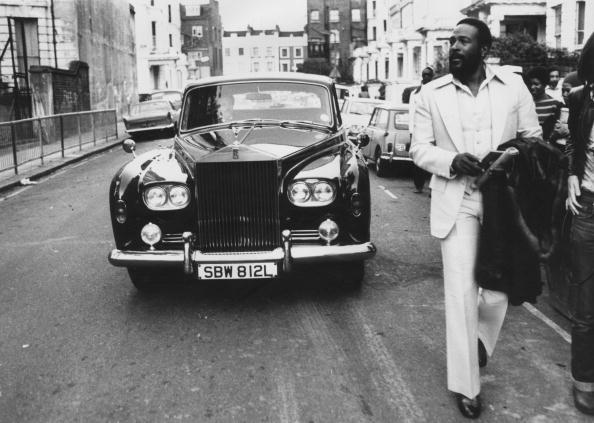
6th October 1976: American soul singer Marvin Gaye (1939 – 1984) walking ahead of his Rolls Royce in Notting Hill, London. (Photo by John Minihan/Evening Standard/Getty Images)
There was no down time. The acts worked two-hours a day on etiquette and posture:
…I just work with the posture and the dealing with the clearness of the mind and knowing who you are and how to handle your body on stage, how to handle yourself on stage and off stage. See because if you think that you’re going tocome on stage and be classy or whatever – that’s not going to happen, you’re a big phony, see. What you have to be, you have to live whatever you do all day long. I always told the artists, every time you’re on stage, it’s nothing but a dress rehearsal….
Then came Diana Ross:
And then there was, ah, Diana Ross, who was a hard worker. She was only about a size 5 and when we really were getting ready for a show or project she worked so hard, no one worked as hard as she. And she would come down to about a size 4. But then I remember it was Diana Ross and the Supremes they were sort of singing and, and like – Baby Love, Baby Love and make, kind of making, ah, I thought it was making faces. I said, what are you doing? And they said, what are we doing? We’re singing. I said, well it looks like you’re making faces to me…
Diana Ross said, well my brother said I had beautiful eyes. I said, well, you do but all you have to do is sing and keep your eyes still, let everybody look at them. And she says, well, you say I’m frowning but I’m Souling she says, I’m feeling it. And I said, well, we’re going to have to learn how to project without, where you look pleasant. You can’t look like you’re angry, you can’t open your mouth so wide until you look like you’re going to swallow the mike.
You, you, we have to work with you because really a singer, all a singer needs is voice and expression anything else you have is an asset to your profession. So that’s what we did, we worked on expressing, singing and then expressing yourself, looking pleasant and, and with a smile and maybe a gesture and how to handle a mike, you see, so that the mike don’t handle you.
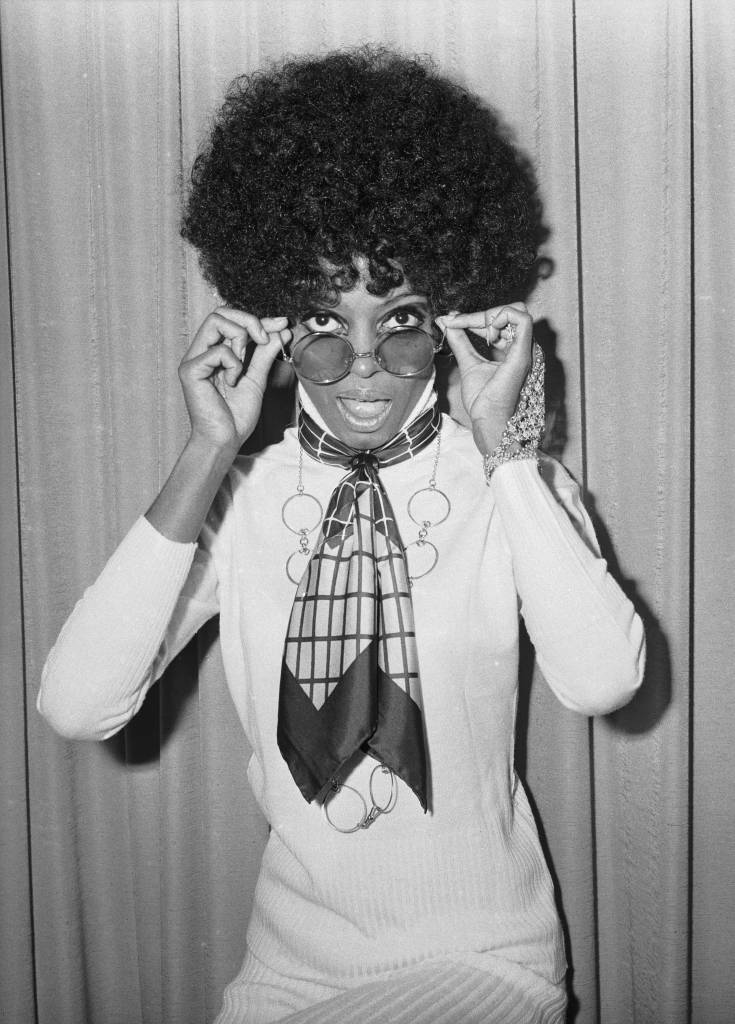
19th November 1968: Singer Diana Ross at he headquarters of EMI Records. (Photo by Larry Ellis/Express/Getty Images)
Powell advocated dancing with your knees. Buttocks were so uncouth:
I don’t want you ever to look forward, lean forward, you do not protrude the buttocks. It’s always goes under. You have two hip bones in the front of you, let’s feel them, let’s find them and you’re going to push, you’re going to push these hip bones forward like you’re pushing them up under your chin. You know they won’t go but the more you do this is, gives you correct posture. And this is what they did. And then, how to walk; you life your feet and walk a straight line, one foot in front of the other, point your toes through your shoes and walk and walk, keep the hip bones forward and the position of the ears straight with the, with the, with your shoulder line. The torso of the body should never move, all you need to walk is to lift your feet and let the action carry the body. And that’s what we did.
“The buttocks is not the greatest part of your body so you don’t want to protrude it because you’re sending the wrong message. And, ah, the girl said, a bar stool, well I don’t know why we should learn to sit on a bar stool, we don’t go to bars, we don’t even drink. I said, for, for your performance you have to learn how to use all types of props and that’s what we did.
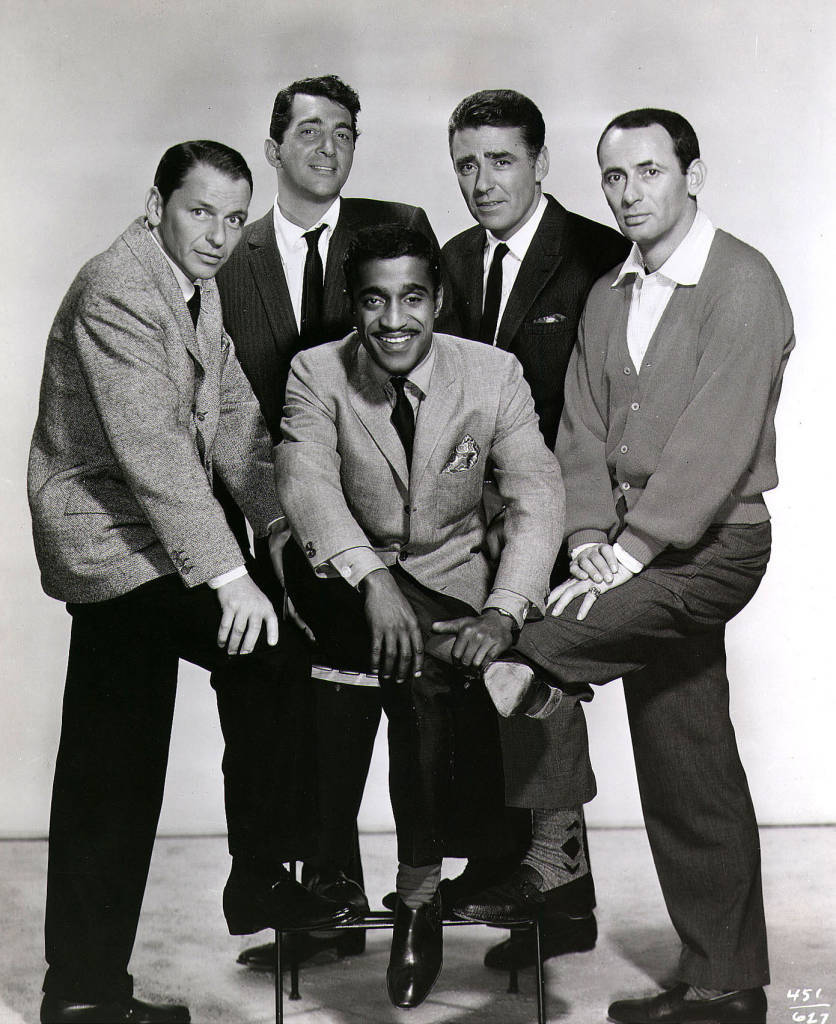
An undated promotional photo of the ”Rat Pack”, (from left)Frank Sinatra, Dean Martin, Sammy Davis Jr., Peter Lawford and Joey Bishop. (photo by Newsmakers)
They charmed and beguiled:
…this gentleman said, and I’m Joey Bishop and uh, I said, well Mr. Bishop, I’m so thrilled, why the girls will just be love – love that you’ve come to pay respect to them, won’t you come in? And I would fix him a drink, or whoever. And I said, and the girls is taking a shower, they may not have been, but I didn’t allow anybody to see an artist when they came off a stage for twenty minutes. Because they were taught to work so hard, they were ringing wet even their shoes was wet.
So I went back stage after I’d fix the drink and I said to the Supremes, uh, guess who’s out front, Joey Bishop. Well I didn’t really know him that well at that time. So they got all excited, oh really, oh really. I said, just calm down now, I said, because he’s gonna, you’re gonna pay him the same respect when he’s appearing somewhere or whatever, you’re gonna go and do the same thing. So now he’s just a, a great artist and that’s all. So now I told them five minutes has gone by so I said, in the next fifteen minutes, one of you come out and all, whoever, you can come out one at a time, but you must be out in fifteen minutes and, and they had lounging robes to wear backstage uh, in their little dressing room where they were private, then they had the ones to wear when they came out to wear when they came out into uh, it was a hostess coat, into the room to greet their guest, so they were ready and they looked like they stepped out of a band box each time…
Powell worked by the mantra:
I teach class, and class will turn the heads of kings and queens.
And race? When you’re black and on show, you cannot afford to fail.
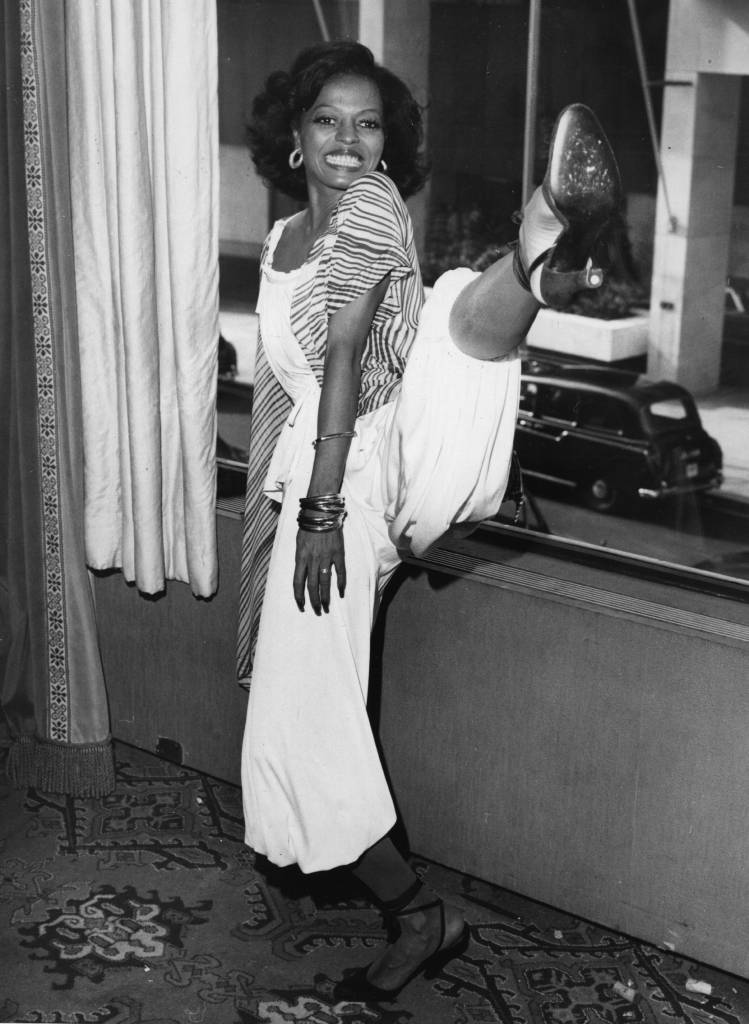
10th March 1976: Actress and singer Diana Ross, high kicking during a press conference at London’s Inn On The Park Hotel. (Photo by Mike Stephens/Central Press/Getty Images)
Mary Wilson and Powell doscussed image for London’s Victoria and Albert Museum:
Maxine Powell:
All my life I was thinking of things that would help my race become outstanding and I thought of class and style – and refinement was two things that would be accepted around the world.
Mary Wilson:
So going out and travelling all over the world – it was always important for us to – make sure that our blackness was known and that we held ourselves in such a way whereas – you know – we felt as good as the next person.
Maxine Powell:
And I know today that to look chic, stunning, elegant and smart can be learnt. And then there’s certain colours that make you glow. So you learn that. And then they always looked good. And then they wanted to do something different. They wanted to glitter… And they were doing the shake, a dance called the shake and I said – what are you doing? Oh, we’re doing – they were just like the youngsters of today – oh we’re doing the – a dance, I don’t know if you know about it – and I said – yeah, I know about the shake. And I showed them how it should be done.
With the buttocks tucked under, smiling and shaken to the floor, you see. And then coming up and then going into something classy, and smiling and gleaming and whatnot. So they learned how to do those things.
And now, without further ado,…Diana Ross and The Supremes:
Maxine Powell left Motown in 1969 and began teaching personal development courses from 1971 until 1985 at Wayne County Community College.
On May 31, 2013, she suffered a fall and her health went steadily downhill until she died on October 14, 2013, at the age of 98 at Providence Hospital in Southfield, Michigan.
Would you like to support Flashbak?
Please consider making a donation to our site. We don't want to rely on ads to bring you the best of visual culture. You can also support us by signing up to our Mailing List. And you can also follow us on Facebook, Instagram and Twitter. For great art and culture delivered to your door, visit our shop.


